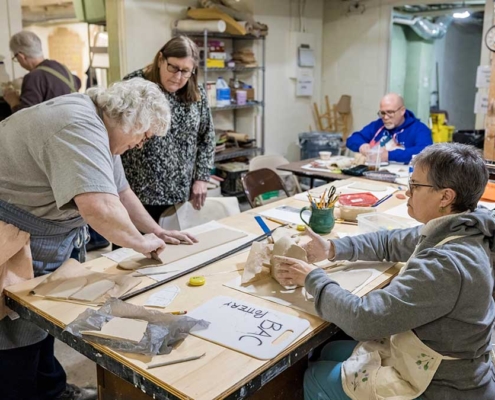 https://hendricksfamilyfoundation.org/wp-content/uploads/2025/03/sdb-data-tool-d.jpg
675
1000
Richard McGrath
https://hendricksfamilyfoundation.org/wp-content/uploads/2023/06/hendricks_family_foundation_logo_wht.png
Richard McGrath2025-03-17 12:17:292025-03-17 13:55:46The School District of Beloit Data Tool
https://hendricksfamilyfoundation.org/wp-content/uploads/2025/03/sdb-data-tool-d.jpg
675
1000
Richard McGrath
https://hendricksfamilyfoundation.org/wp-content/uploads/2023/06/hendricks_family_foundation_logo_wht.png
Richard McGrath2025-03-17 12:17:292025-03-17 13:55:46The School District of Beloit Data ToolThe Challenge of Housing in Beloit
Insights for Moving Forward Grounded in Data
“A thriving community.” This is the opening of the vision statement for the Hendricks Family Foundation, and we lean into it often to shape and prioritize our work here in Beloit. When challenges emerge, we ask ourselves: What can we do to contribute? What do we know and need to know? How can we help move the needle?
“It appears we have hit what we could describe as a perfect storm as the market tightens and inflationary pressures grow.”
The Foundation recently commissioned a study of housing in the city. It isn’t the first and it won’t be the last, but the intent was to add to what others have told us, ground ourselves in the data and ideally, to offer insights for possible movement forward. A link to this and other housing related work is included at the end of this blog.
What Do We Know?
Rental Housing
While far from being a new concern, the urgency surrounding rental housing in the city has been steadily growing. It appears we have hit what we could describe as a perfect storm as the market tightens and inflationary pressures grow.
-
- The City of Beloit has high demand for rental units. We have more renters, fewer homeowners and more single-family homes used as rentals than most cities.
- 32% of single-family homes are used as rentals translating to approximately 3,700 households who rent a single-family house.
- Vacancy rates are below 1 percent; an unhealthy level that drives up prices.
- Overall, home values are low while rents continue to climb making the investor rental market a particularly good return on investment and the rent-for-home value proposition for tenants remarkably poor. For example, monthly rental expenses are about only 6% less expensive than in neighboring Janesville even though the average rental house in Beloit is worth 59% less.
- Median incomes in the city are on the rise, increasing from $44,985 in 2021 to $57,168 in 2023. This is something to celebrate, however rents are increasing as well, growing almost 22% since 2019.
- City zoning and approval processes as structured likely add to the cost and challenge of developing rental housing in the city.
- When market rate units are created and out of reach for some, concerns and complaints emerge, yet research studies indicate that creating market rate units results in a migration pattern that ultimately opens more affordable units. This is a community win given that market rate units do not require the same public subsidies as the creation of affordable units often do.
Homeownership
-
- Homeownership rates in Beloit lag both countywide and state rates regardless of household age or income. Rates among Black households are substantially lower than other demographic groups regardless of age or income.
- Owner-occupied homes across the city have a higher per square foot value than homes that are rentals.
- Home construction has tapered off dramatically since the 1960’s and fewer homes are being sold in Beloit from one year to the next. Starter, modest and affordable homes with less than 1,000 square feet have completely ceased being built.
- While Beloit’s housing stock is affordable in the relative sense, the most affordable homes, those valued below $105,000, are rarely available for sale and the percentage of these homes purchased to be owner-occupied has decreased steadily since 2017.
- 83% of homes for sale in recent years are over $150,000 and the increase in home sales beginning in 2020 occurred almost entirely in the upper half of the price distribution.
- 50% of homes in the city were built before 1950 a figure notably higher than state averages.
- Age can and often does impact the quality of homes as well and an analysis of the dollar value per square foot in Beloit homes suggests that older homes in the city are not being maintained as well as newer units.
What Can Be Done?
Supply. Quite simply we need more housing units to address the lack of supply. This is especially true for affordable units though demand exceeds supply for housing across the income and value continuum.
Homeownership. Actively working to increase homeownership is an important housing strategy that can stabilize neighborhoods, encourage community engagement, increase household wealth, and increase property values. Homeownership strategies that reach across demographic groups can be beneficial for local families and could help to increase rates across the city overall.
Removing Barriers. Adjusting current zoning regulations and processes can support an increase in supply.
Leveraging our Assets. Exploring partnerships and collaborative strategies that can (1) increase the development of infill housing, (2) reduce the number of vacant housing units in the city and, (3) incentivize investments to improve aging homes.
What is Being Done?
“Beloit is a resilient and collaborative community…”
In addition, exploratory discussions are beginning to emerge around innovative strategies to encourage infill housing, to reduce the number of vacant housing units in the city and to reduce the percentage of single-family homes used as rentals.
What Can We Do?
Homeownership. The Hendricks Family Foundation will continue our partnership with ACTS housing as a core homeownership solution including exploring opportunities to increase activity and target the conversion of units from renter to owner-occupied.
Supply. While the Foundation is not a housing developer, we can leverage our time, talent, and resources to actively seek opportunities to collaborate with our city and business partners to deploy additional housing solutions.
A Note on Gentrification
Gentrification is an often-cited concern in discussions about housing development and housing policy here in Beloit (and around the country). The term, coined in Britian in the 1960’s, was described this way: “One by one, many of the working-class quarters have been invaded by the middle class – upper and lower… Once this process of ‘gentrification’ starts in (an area) it goes on rapidly until all or most of the working-class occupiers are displaced and the whole social character of the (area) is changed.”
A look at both our neighborhoods and the data in Beloit indicates that gentrification as defined above is not the issue at the core of local concerns. Using property tax rates, in particular increases in rates, as an indicator of increasing home values, research shows that across all homes in the city, property tax rates decreased more often than they increased in recent years and for homes with property taxes less than $5,000, nearly 60% saw decreased rates.
While gentrification does not appear to be an active driving force in the market, there are legitimate concerns about displacement. In some cases, residents are being priced out of their homes, but the root cause appears to be related to be lack of supply rather than new development or substantial rehabilitation activities.
Links to Studies and Reports
-
- Unlocking the American Dream: Positioning Beloit’s Housing Market for Growth.
- City of Beloit Housing Maps Properties Delta 20231120 | Tableau Public
- The Greater Beloit Economic Development Corporation (GBEDC) released the GBEDC Housing Demand Analysis 2022.pdf
- The City of Beloit Housing Affordability Report (2023 Permit Year)-Final
- City-Wide Effects of new housing Supply.






